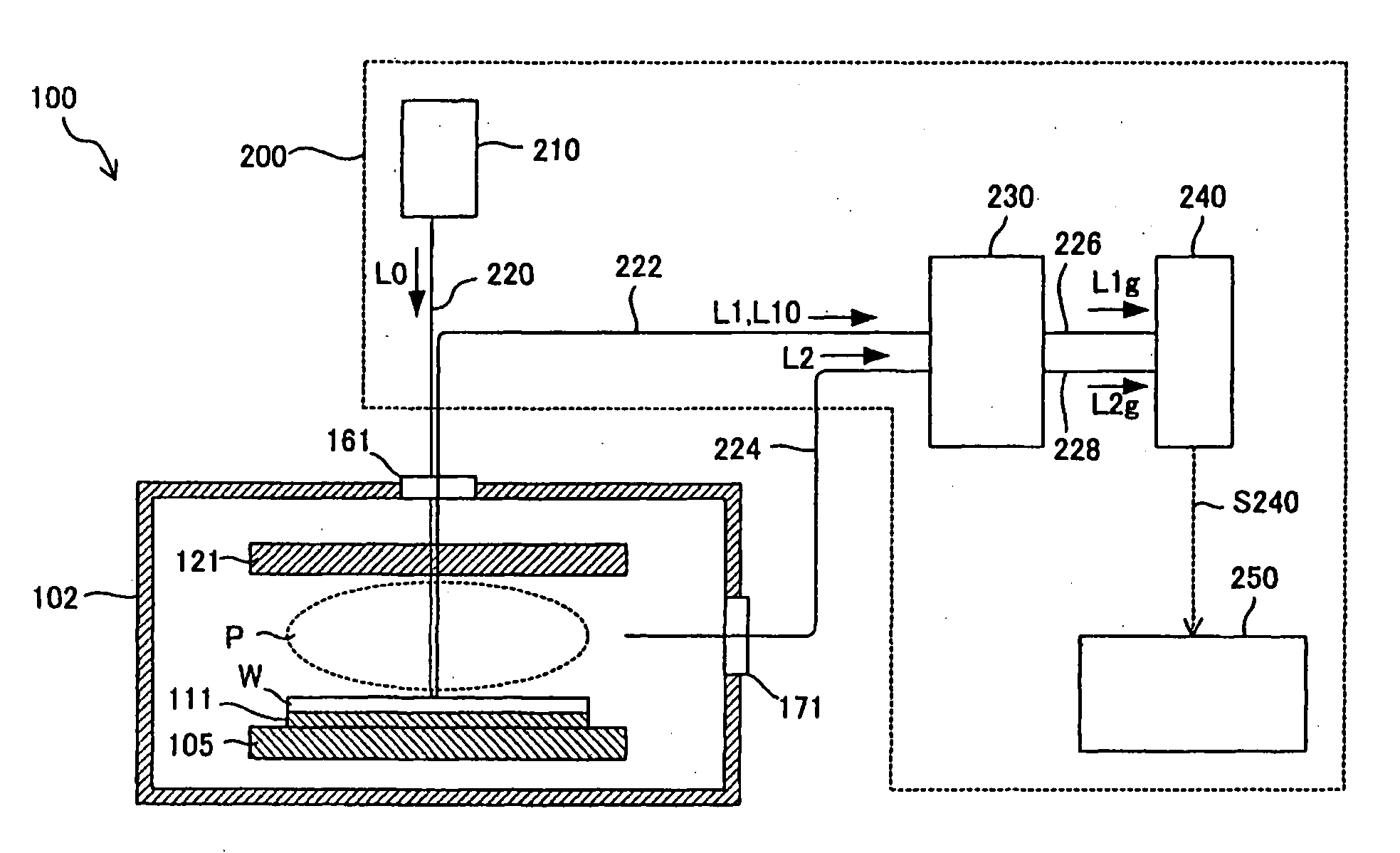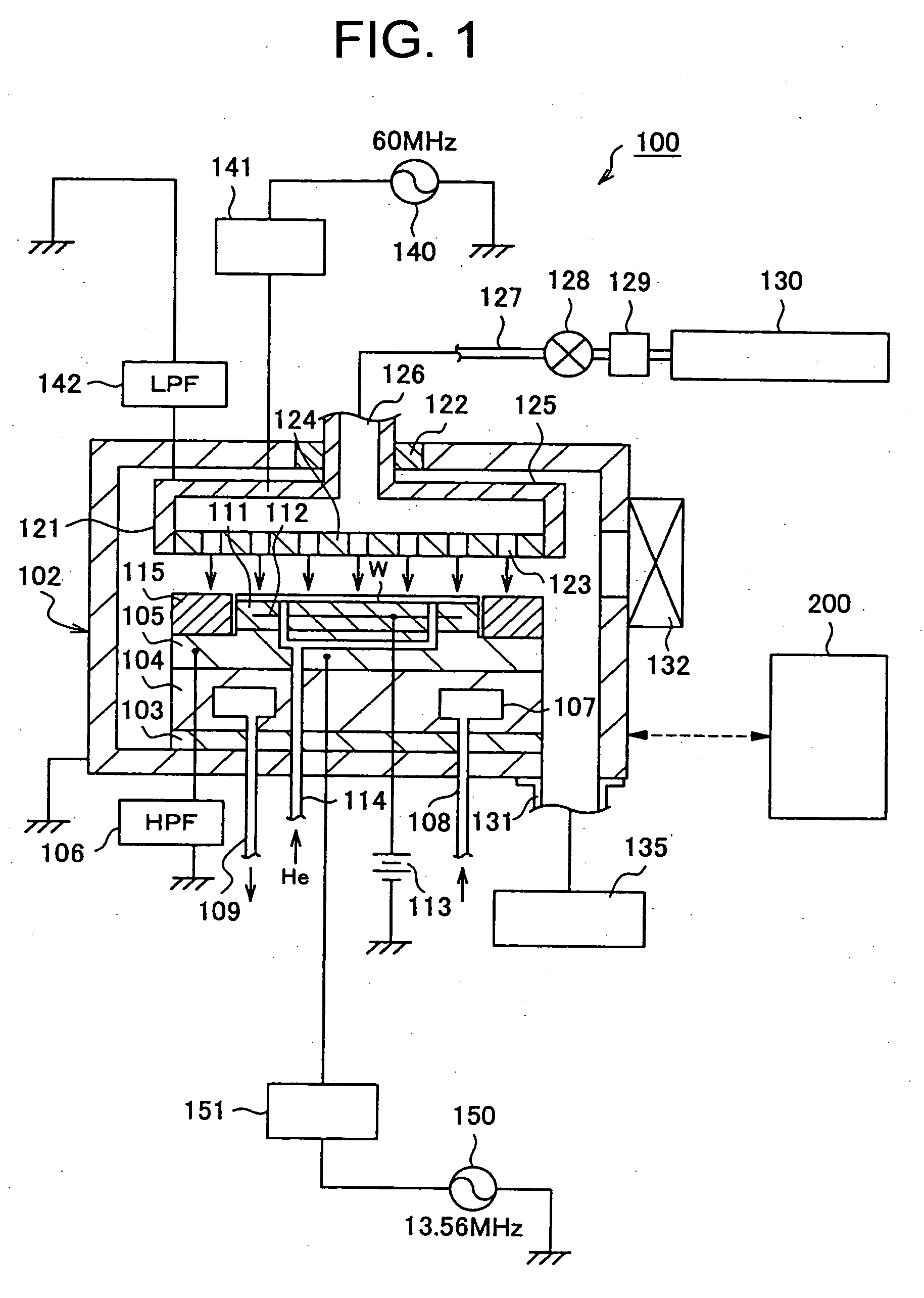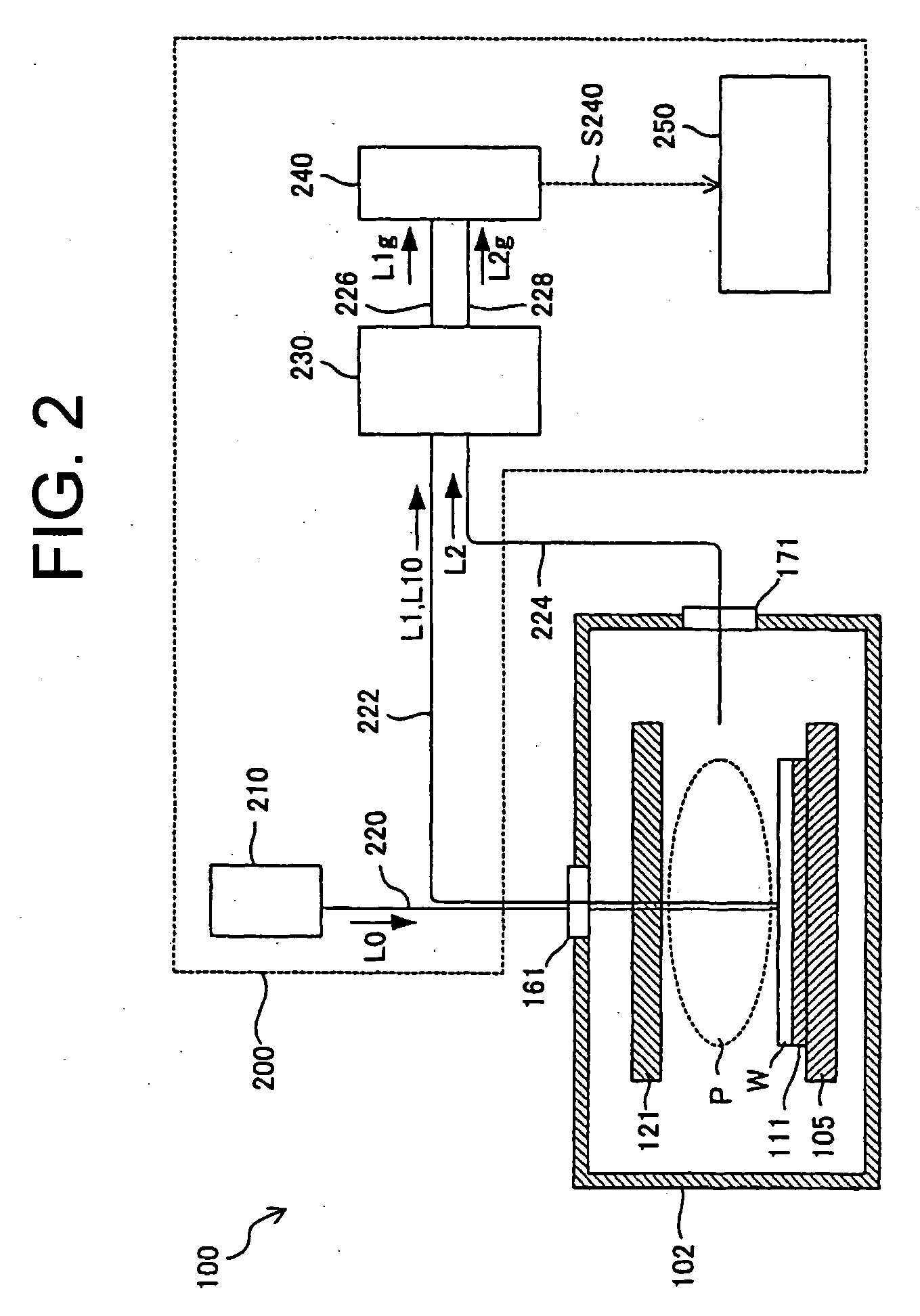Plasma treatment apparatus and light detection method of a plasma treatment
- Summary
- Abstract
- Description
- Claims
- Application Information
AI Technical Summary
Benefits of technology
Problems solved by technology
Method used
Image
Examples
working examples
[0036] Preferred embodiments of the plasma treatment apparatus and the plasma treatment apparatus light detection method according to the present invention are explained below while referring to the appended figures. Furthermore, within the present specification document and the figures, constituent elements having substantially the same mechanical structure are assigned the same identifying number, and redundant explanations are omitted.
[0037] Structure of an etching apparatus 100, as a plasma treatment apparatus that is a working example of the present invention, is explained while referring to figures. FIG. 1 is a cross-sectional schematic drawing showing structure of etching apparatus 100. Etching apparatus 100 is constructed as a capacitively-coupled flat-plate etching apparatus having upper and lower parallel opposing electrodes for which one electrode contacts the power source used for plasma formation.
[0038] This etching apparatus 100 has a treatment chamber (chamber) 102 ...
PUM
 Login to View More
Login to View More Abstract
Description
Claims
Application Information
 Login to View More
Login to View More - R&D
- Intellectual Property
- Life Sciences
- Materials
- Tech Scout
- Unparalleled Data Quality
- Higher Quality Content
- 60% Fewer Hallucinations
Browse by: Latest US Patents, China's latest patents, Technical Efficacy Thesaurus, Application Domain, Technology Topic, Popular Technical Reports.
© 2025 PatSnap. All rights reserved.Legal|Privacy policy|Modern Slavery Act Transparency Statement|Sitemap|About US| Contact US: help@patsnap.com



